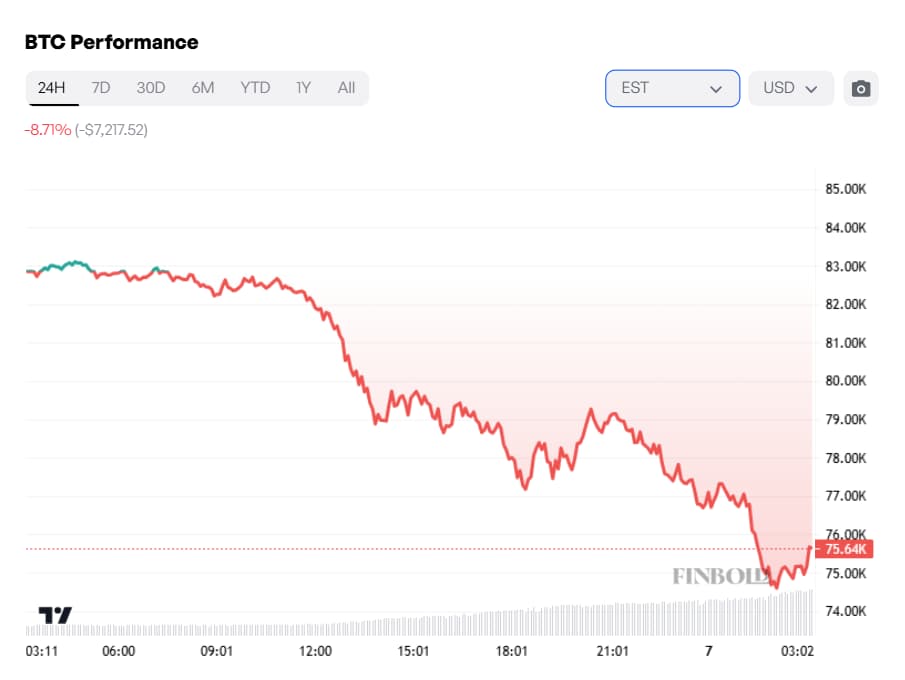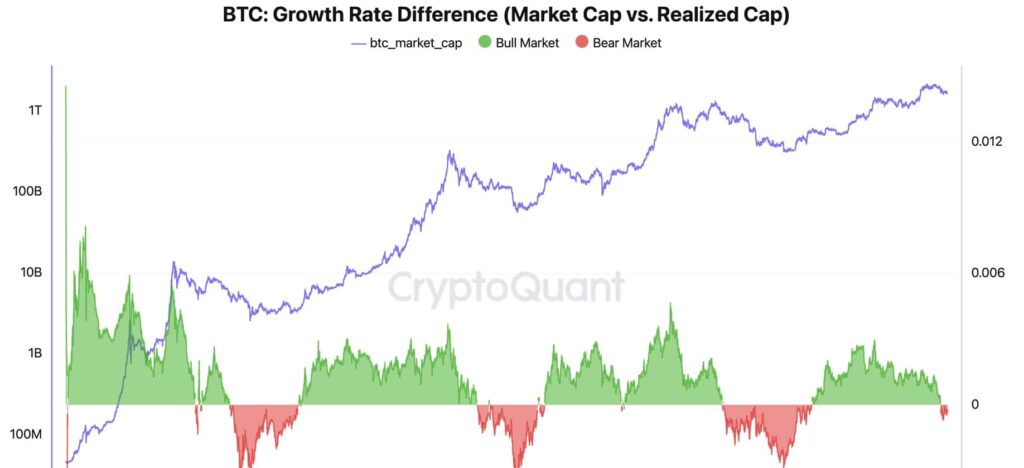Bitcoin (BTC) has plunged below $80,000 for the first time in weeks, sparking concern that the crypto bull cycle may be losing steam.
Over the weekend, BTC dropped as much as 11% to a 25-day low of $74,660 amid intensifying global trade tensions, following U.S. President Donald Trump’s announcement of steep new tariffs on key U.S. trading partners.
This broader macro shock triggered a global market rout, with the S&P 500 tumbling 6% on April 4, its worst performance since the pandemic-driven crash in March 2020 and nearly $1.4 billion in crypto liquidations in just 24 hours, mostly from overleveraged long positions.
As of press time, the leading cryptocurrency is trading at $75,643, down more than 8% over the past 24 hours.

Is the Bitcoin bull market over?
The recent downturn in Bitcoin’s price has reignited debate over whether the current bull cycle has already peaked. While price volatility raises concerns, deeper signals from on-chain data suggest a more sustained shift in momentum, according to CryptoQuant CEO Ki Young Ju.
Ju recently highlighted a growing disconnect between two critical on-chain metrics—Realized Cap and Market Capitalization, as evidence that Bitcoin may have already entered a bearish phase.

Realized Cap accounts for the price at which each unit of BTC last moved on-chain, offering a view of the actual capital entering the market. Meanwhile, Market Cap reflects the market’s valuation based on current prices and total supply, often swinging sharply with shifts in buy-sell dynamics.
When Realized Cap rises while Market Cap stays flat or falls, it suggests that although capital is flowing in, it’s being absorbed by heavy sell pressure, an indicator of bearish sentiment.
On the flip side, if Market Cap surges without a corresponding rise in Realized Cap, it usually means small capital inflows are pushing prices higher, typical of bullish conditions.
With current data showing the former scenario playing out, analysts warn that a quick recovery is unlikely. Historically, similar patterns have taken several months to reverse, suggesting that Bitcoin could face an extended period of consolidation of at least six months before any meaningful rebound.
Featured image via Shutterstock







